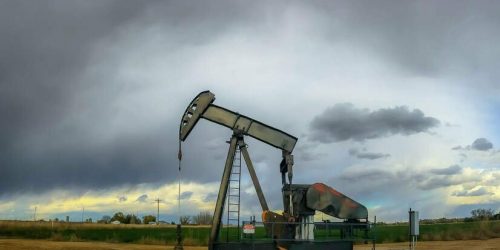Oil and Gas Development Company Limited (OGDCL) has carried out 3,407 L-KMs 2D and 1,324 Sq. KMs 3D seismic surveys in its various operational areas during the last fiscal year aimed at expediting hydrocarbon exploration activities and making the country self-reliant in the energy sector.
“Moreover, around 5,582 Line Kilometers (L-KMs) of 2D and 4,977 Square Kilometers (Sq. KMS) of 3D seismic data has also processed/reprocessed using in-house resources,” according to the company’s annual financial report available with APP.
The acquired seismic data represented 79 percent of the total 2D seismic data acquisition in the country.
The state-owned OGDCL, being the market leader in Exploration and Production (E&P) sector of the country held the largest exploration acreage, as of June 30, 2020, which stood at 79,994 sq. km representing 37 percent of Country’s total area under exploration.
The Company’s exploration portfolio currently consisted of 44 owned and operated joint venture exploration licenses. Additionally, the OGDCL possessed working interest in seven exploration blocks operated by other E&P companies.
During the period under review, the company net sales remained Rs 244.857 billion as compared to Rs 261.481 billion in the corresponding period last year, while its profit before taxation stood at Rs 143.065 billion in comparison with Rs 176.599 billion of the previous year.
The OGDCL injected 14 new wells, producing 251,642 Barrels crude oil and 6,709 Million Cubic Feet (MMCF) gas, in its production gathering system during the last fiscal year.
It said the coronavirus pandemic and natural decline in existing oil and gas deposits had adversely impacted the company’s production, which was partially mitigated by injection of the new 14 wells in the production gathering system.
The company also drilled 25 wells including 15 exploratory/appraisal namely Rangunwari1, Dhok Hussain North-1, Wali-1, Metlo-1, Katiar-1, KUC-1, Jatoi-1, Qadirpur Deep X-1A, Lakhi Rud X-1, Bobi Deep-1, Togh Bala-1,Umair NW-1, Seni Gumbat-1, Washuk-1 & Zin SML-4H] and five development wells namely Thora Deep-3, Rajian-11, Nashpa-10, Qadirpur HRL15 & Pasahki-11] besides five re-entry/side track wells namely Siab-1, Qadirpur-14, Rajian-10, Thal East-1 and Thora Deep-3.
Besides, the OGDCL completed drilling and testing of 14 wells pertaining to the year 2018-19, whereas total drilling during the 12-month period stood at 60,753 meters.
The company’s exploratory efforts to locate new reserves yielded five 5 oil and gas discoveries having expected cumulative daily production potential of 28 MMCF of gas and 892 barrels of oil.
The discoveries include Chanda-5, Togh-1 (Lumshiwal), Togh-1 (Hangu) in district Kohat, Khyber Pakhtunkhwa province, Pandhi-1 in district Sanghar and Metlo-1 in district Khairpur, Sindh province. “Preliminary reserve estimates are 49 billion cubic feet of gas and 1.5 million barrels of oil, combined 10 million barrels of oil equivalent.
Bankruptcies Adding to the Problem
With essentially no bonding in place to cover the cost of well plugging and abandonment, regulators have effectively allowed oil and gas operators to self-bond, and for the states to rely on the promise that these companies remain financially viable and fulfill their legal obligations to plug and abandon wells.
The current financial crisis in the oil and gas industry makes that outcome unlikely for many of the existing companies as the industry is experiencing a wave of bankruptcies — with many more expected — as oil prices remain low. Without proper bonding in place, this is essentially the worst case scenario.
“If companies are in dire straits plugging these wells is probably one of the very last things on the list of management ideas for how to use cash,” Robert Schuwerk, co-author of the report, explained to the Financial Times. “If they happen to go bankrupt, and nobody wants to pick up the well out of the bankruptcy, then the state’s going to end up picking up the tab.”
Carbon Tracker highlights Petroshare as an example of how the bankruptcy process is adding to the problem of shifting clean up costs from the private oil companies to the public. Petroshare had bonds that amounted to 3% of expected plugging and abandonment costs for its 89 wells.
After Petroshare declared bankruptcy, a new entity was formed by some of Petroshare’s creditors to acquire the remaining assets that had value. The state of Colorado let the new company abandon any of the 89 wells that it didn’t want — leaving the cleanup costs to the taxpayers of Colorado. Carbon Tracker estimates that 67 wells could now be the state’s responsibility, with a potential price tag of almost $12 million to plug and abandon the wells.
The Denver Business News reported on an exchange at a hearing of the Colorado Oil and Gas Conservation Commission about the Petroshare case which neatly sums up the bigger situation the country is facing as oil and gas companies go bankrupt.
“They become our responsibility for the rest of their lives?” asked Pam Eaton, a commissioner with the Colorado Oil and Gas Conservation Commission, during a June 10 hearing about PetroShare.
“That’s correct,” replied Steven Kirschner Steven Kirschner, COGCC enforcement officer.
Colorado taxpayers are picking up the bill for these abandoned oil wells while the new company that acquired the valuable wells from the bankruptcy walks away from the cleanup costs.
The problem of unfunded environmental liabilities isn’t just a problem with small companies like Petroshare. In July, The New York Times reported that the large fracking company Chesapeake Energy likely had cleanup liabilities of $1.4 billion for 6,800 wells and had only $41 million allocated for that task.








